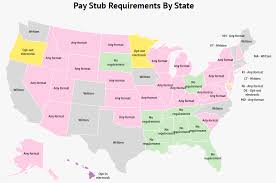Ultimate Pennsylvania Pay Stub Rules Complete State Guide 2025
Table of Contents
- Introduction to Pennsylvania Pay Stub Rules
- Importance of Accurate Pay Stubs
- Pennsylvania Payroll Laws and Regulations
- How to Create a PA Pay Stub
- Common Deductions in Pennsylvania
- Common Payroll Errors to Avoid
- Using a Pay Stub Generator
- Best Practices for Employers
- FAQs About Pennsylvania Pay Stubs
- Related Articles
- Conclusion
Introduction to Pennsylvania Pay Stub Rules
The Pennsylvania Pay Stub Rules are crucial for employers and employees to ensure accurate payroll, compliance with state laws, and transparency in wage reporting. A proper pay stub details gross pay, deductions, net pay, and pay period information, helping employees verify their earnings while keeping employers compliant with legal requirements.
Employers in Pennsylvania can use the Pay Stub Generator or Regular Pay Stub to create accurate and professional pay stubs efficiently.
Importance of Accurate Pay Stubs
Providing accurate pay stubs in Pennsylvania is not just a legal requirement but also a best practice for building trust between employers and employees. A detailed pay stub allows employees to review gross pay, deductions, overtime, and net pay while serving as a record for disputes or audits. Employers also benefit from clear, standardized pay stubs that reduce payroll errors and ensure compliance with Pennsylvania payroll regulations.
Pennsylvania Payroll Laws and Regulations
Pennsylvania has specific requirements for payroll documentation and pay stubs. Key rules include:
- Employers must provide employees with accurate pay information showing gross pay, deductions, and net pay.
- All employee and employer details, including names, addresses, and Federal EIN, must be listed.
- Federal and state tax withholdings must be calculated correctly and reflected on each pay stub.
- Overtime pay must be calculated at 1.5x the regular rate for hours exceeding 40 per week.
- Employers are required to maintain payroll records for at least three years.
Compliance with these rules protects employers from penalties and ensures employees have a transparent record of earnings.
How to Create a PA Pay Stub
To create a compliant Pennsylvania Pay Stub, follow these steps:
- Collect employee information, including full name, address, and last four digits of SSN.
- Include employer details such as company name, address, and EIN.
- Specify the pay period start and end dates, and pay date.
- Calculate gross pay, including salary, overtime, and bonuses.
- Apply federal and state tax withholdings accurately.
- Subtract benefits, retirement contributions, and voluntary deductions.
- Include net pay and year-to-date totals for transparency.
- Format the pay stub professionally for print or digital distribution.
Using the Pay Stub Generator or Regular Pay Stub simplifies this process and reduces errors.
Common Deductions in Pennsylvania
The Pennsylvania Pay Stub Rules require all deductions to be clearly itemized. Common deductions include:
- Federal and state income taxes
- Social Security and Medicare contributions
- Health, dental, and vision insurance
- Retirement contributions (401k, IRA)
- Voluntary deductions such as union dues or charitable contributions
Proper classification of pre-tax and post-tax deductions ensures compliance and accurate payroll reporting.
Common Payroll Errors to Avoid
- Incorrect tax withholding calculations
- Misclassification of pre-tax and post-tax deductions
- Omitting year-to-date totals
- Incorrect overtime calculations
- Errors in employee or employer information
Following the Pennsylvania Pay Stub Rules and using a generator reduces these errors significantly.
Using a Pay Stub Generator
Automated pay stub generators simplify payroll and ensure accuracy. Benefits include:
- Automatic federal and state tax calculations
- Accurate handling of pre-tax and post-tax deductions
- Professional, printable pay stubs
- Year-to-date totals included automatically
- Time-saving and error-free payroll
Employers in Pennsylvania can use the Pay Stub Generator or Regular Pay Stub for quick and compliant pay stub creation.
Best Practices for Employers
- Maintain payroll records for at least three years
- Verify employee W-4 and state forms annually
- Audit pay stubs regularly for accuracy
- Train payroll staff on deductions and classifications
- Use automation tools for consistent payroll processing
FAQs About Pennsylvania Pay Stubs
How is overtime calculated in Pennsylvania?
Overtime is calculated at 1.5x the regular hourly rate for hours worked beyond 40 per week.
What is the difference between pre-tax and post-tax deductions?
Pre-tax deductions reduce taxable income (e.g., retirement contributions), while post-tax deductions are applied after taxes (e.g., garnishments).
Can pay stubs be generated digitally?
Yes. Tools like the Pay Stub Generator and Regular Pay Stub allow employers to generate professional digital pay stubs quickly.

